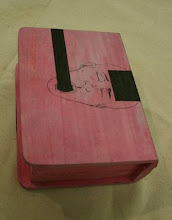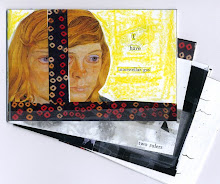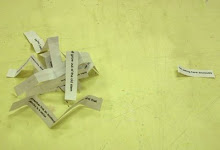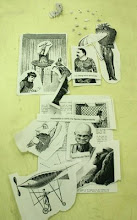VVP: Art 434 & Engl. 410
- Dan Callis and Chris Davidson
- Website for Vision Voice and Practice: An Interdisciplinary Course in Art and Creative Writing
Monday, February 23, 2015
Further gloss on constraint...
"Let each of you look not to your own interests, but to the interests of others. Let the same mind be in you that was in Christ Jesus, who, though he was in the form of God, did not regard equality with God as something to be exploited, but emptied himself, taking the form of a slave, being born in human likeness. And being found in human form, he humbled himself and became obedient to the point of death— even death on a cross." - Paul, in the letter to the Philipians, 2.6-10
Saturday, February 21, 2015
"The body is a formal constraint."
This poem, by Elizabeth Willis, from the February issue of Poetry, is dedicated to the actress Rose Hobart and the artist Joseph Cornell, who had something of an obsession with her. (From Wikipedia: "[Cornell] bought a print of the movie to screen at home, became smitten with the
actress, and cut out nearly all the parts that did not include her.")
It's a really good poem that should be read patiently and out loud. I'm linking to it here, as it connects to this class, not just in our study of Joseph Cornell, but because we ask our students to conceive for themselves a number of formal constraints against which they make their weekly written or visual work. We contextualize this requirement by looking at Cornell's space-constrained boxes alongside Marianne Moore's syllabically constrained poems. Cornell & Moore help set the tone of the class, to help students see, as W.H. Auden says about meter, that "rules...forbid automatic responses, force us to have second thoughts, free from the fetters of Self." Of course, as Willis puts it, "The body is a formal constraint." One is never completely unfettered. Moore in "What Are Years?" suggests that submitting to this fact is the way to move beyond it:
It's a really good poem that should be read patiently and out loud. I'm linking to it here, as it connects to this class, not just in our study of Joseph Cornell, but because we ask our students to conceive for themselves a number of formal constraints against which they make their weekly written or visual work. We contextualize this requirement by looking at Cornell's space-constrained boxes alongside Marianne Moore's syllabically constrained poems. Cornell & Moore help set the tone of the class, to help students see, as W.H. Auden says about meter, that "rules...forbid automatic responses, force us to have second thoughts, free from the fetters of Self." Of course, as Willis puts it, "The body is a formal constraint." One is never completely unfettered. Moore in "What Are Years?" suggests that submitting to this fact is the way to move beyond it:
He
sees deep and is glad, who
accedes to mortality
and in his imprisonment rises
upon himself as
the sea in a chasm, struggling to be
free and unable to be,
in its surrendering
finds its continuing.
Thursday, February 19, 2015
Subscribe to:
Comments (Atom)














































































